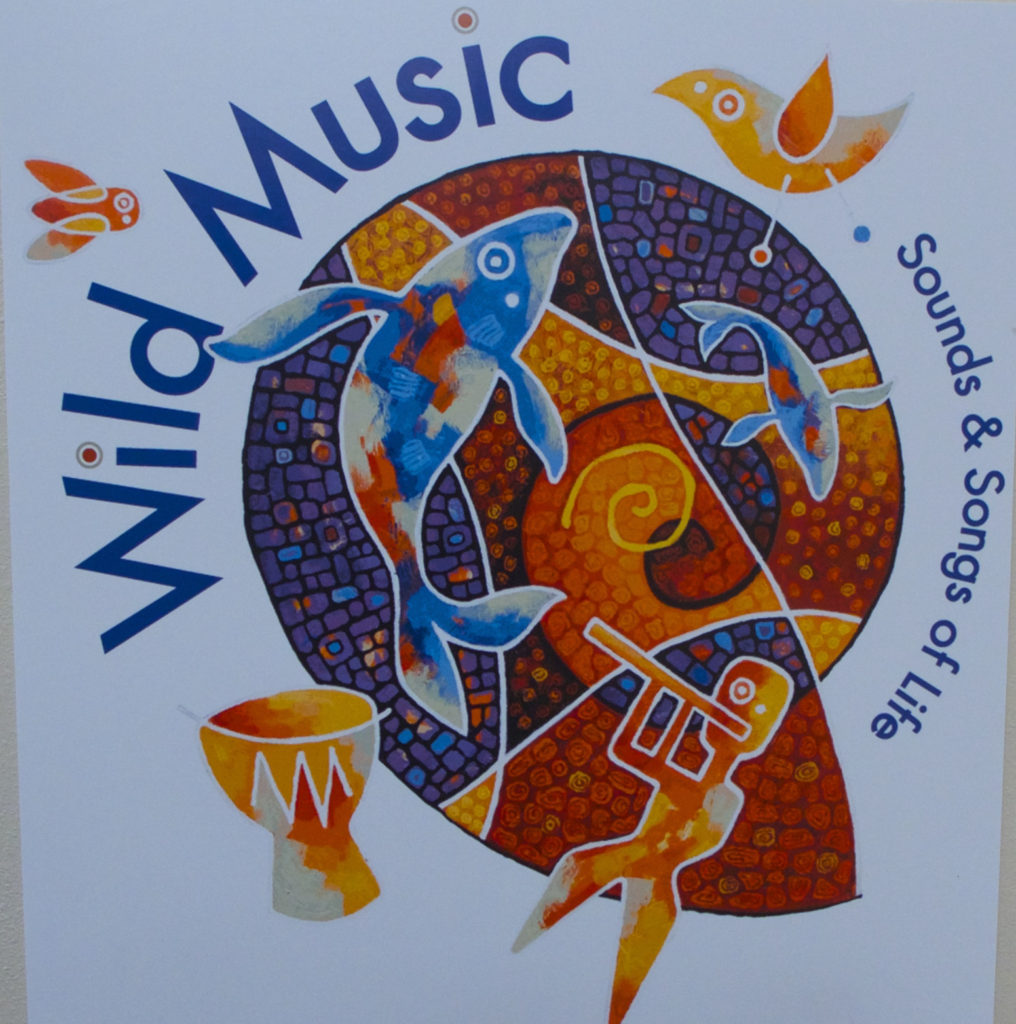
When I think of wild music, I think of Janis Joplin, Tina Tuner, or maybe Jerry Lee Lewis, but the New Mexico Museum of Natural History had something else in mind when we visited their Wild Music; Songs & Sounds of Life exhibit in Albuquerque earlier this week.
This 4,000-square-foot exhibit focuses on music in the world around us from the earliest dawn of time to today’s world. From whales, bullfrogs, songbirds and other sounds in nature, composers have taken inspiration. And, people everywhere sing and dance, use tools for work that make sounds and travel on trains, streetcars and other means that have a rhythmic sound.
Curators of this exhibit say, “What do we all have in common? Long before the advent of iTunes, the musical instinct ran deep. Wild Music explores evidence for the biological origins of music through highly interactive exhibits and exceptional sound experiences, and — in the process — expands our understanding of what makes music.” We’re sharing a little here because we found this exhibit to be fascinating food for thought.
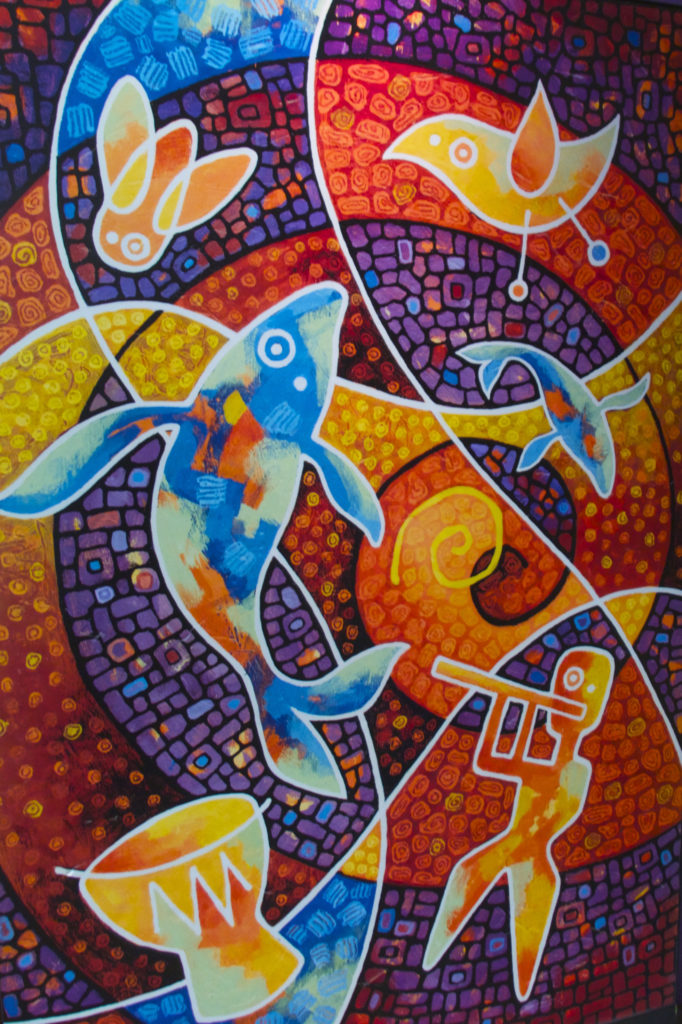
Early Instruments that imitate the sounds of nature
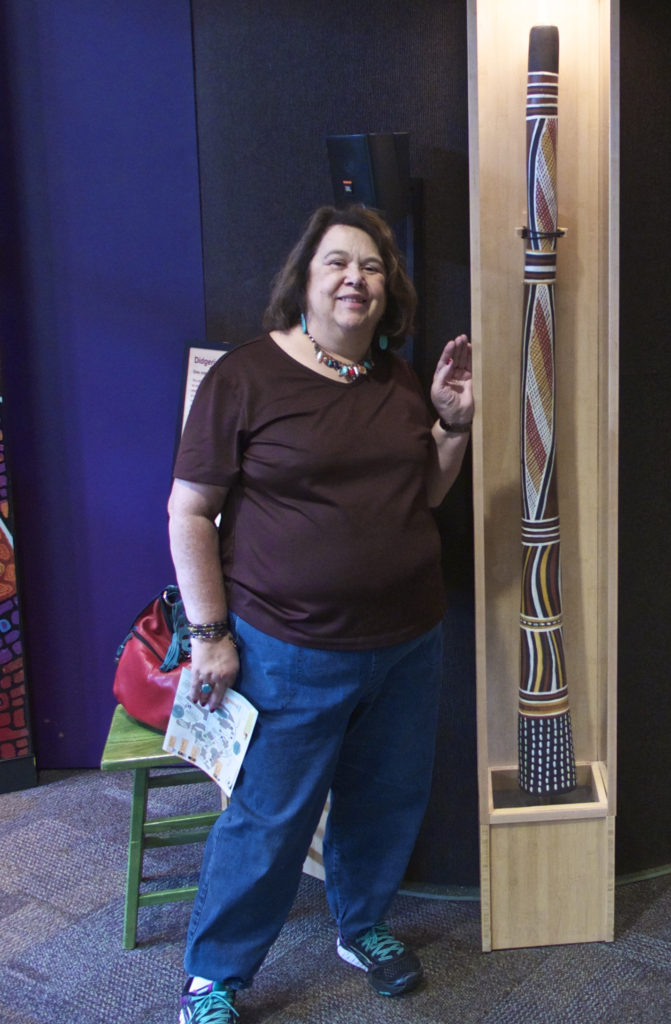
The first instrument we encountered was the didgeridoo, a wind instrument developed by the Indigenous Australians of Northern Australia. It is still in widespread use today both in Australia and around the world. It is sometimes described as a natural wooden trumpet or “drone pipe.” As you can see from the picture of Becky standing next to it, the one here is actually about five-feet long, but they can be up to 10 feet long.
Musicologists classify it as a brass aerophone. The one here was beautifully hand-painted. The exhibit had headphones set up so that you could hear the instrument being played.
So what makes this instrument “wild music”? It’s probably the first instrument played by the cavemen as is evidenced by some of the oldest cave drawings. So, from the time that mankind has had shelter, they’ve wanted a way to have “tunes” in their homes.
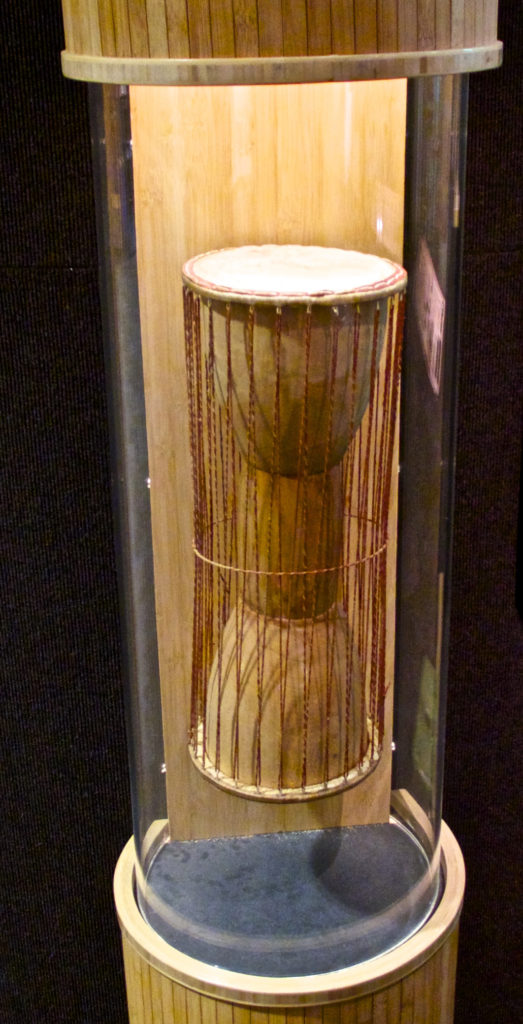
Next, we came across an instrument that has always interested me; it’s the talking drum. It predates the telegraph and radios by thousands of years.
The talking drum is an hourglass-shaped drum from West Africa, whose pitch can be regulated to mimic the tone and meter of human speech. It has two drumheads connected by leather tension cords, which allow the player to modulate the pitch of the drum by squeezing the cords between their arm and body.
Most talking drums sound like a human humming, depending on the way you play. A skilled player, however, is able to play whole phrases. Similar hourglass-shaped drums are found in Asia, but they are used to mimic vocal music and not actual speech.
Europeans exploring Africa in the first half of the eighteenth century noticed that Africans used talking drums as a form of communication. Detailed messages could be sent from one village to the next faster than they could be carried by a person riding a horse.
Wind Instruments and Nature
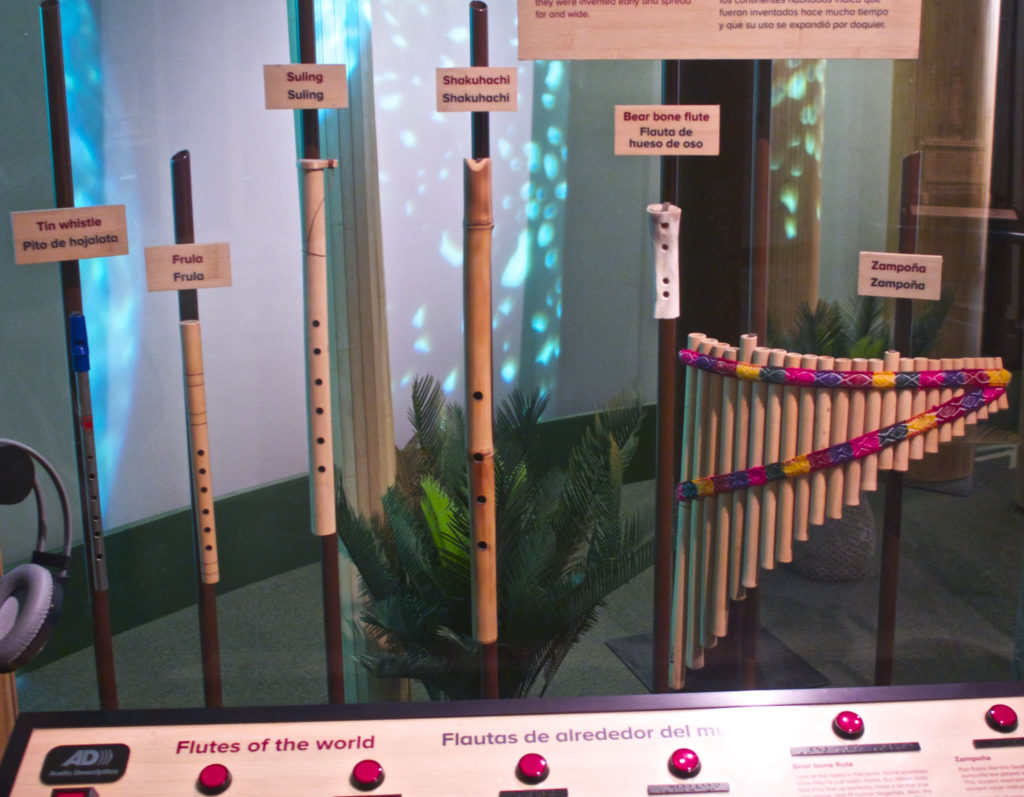
One interactive exhibit featured a collection of flutes. By pressing a button that corresponded to a particular flute, we could hear a recording of that flute and hear the difference in pitch and tone based on the material used to make the flute and the size of the flute.
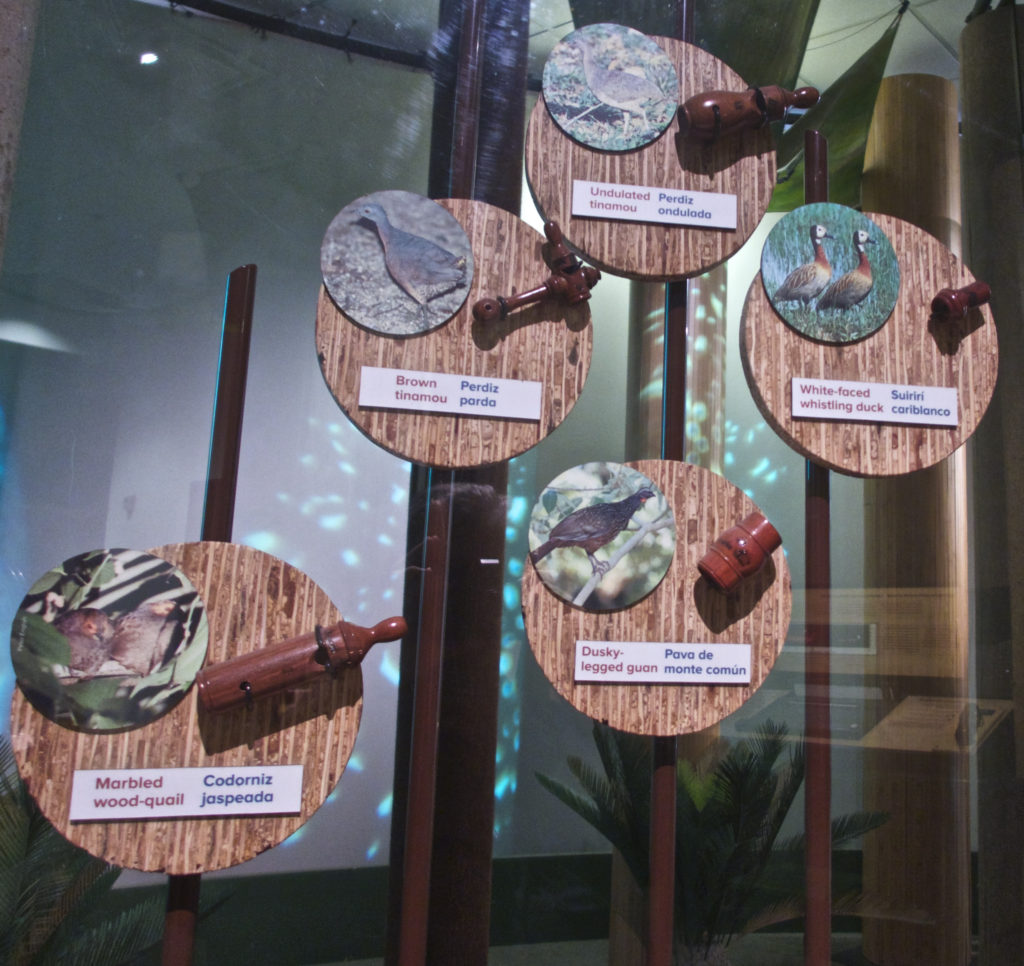
Pictured above was one of the most interesting exhibits. Here the whistles were made specifically to mimic the sound of a specific bird. Pressing the individual buttons enabled us to hear a recording of the whistle being played followed by a recording of the birds singing. It was amazing how close these hand-carved whistles came to the sound of the bird.
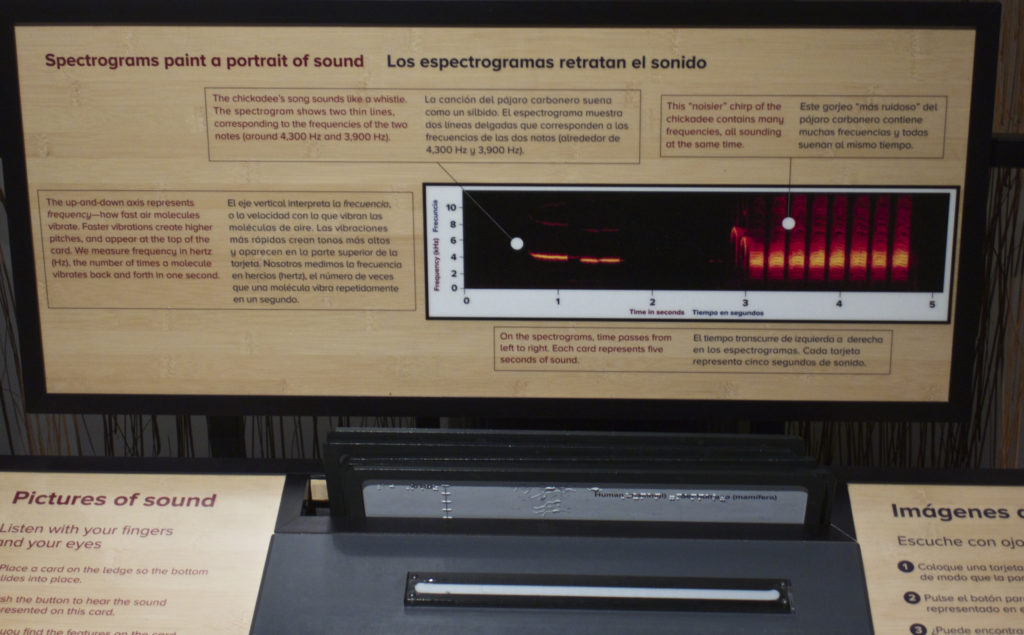
They also had a display that let us play the sounds of the birds and see the frequencies of each bird’s song in the wild. Imagine the patience required to gather these recordings.
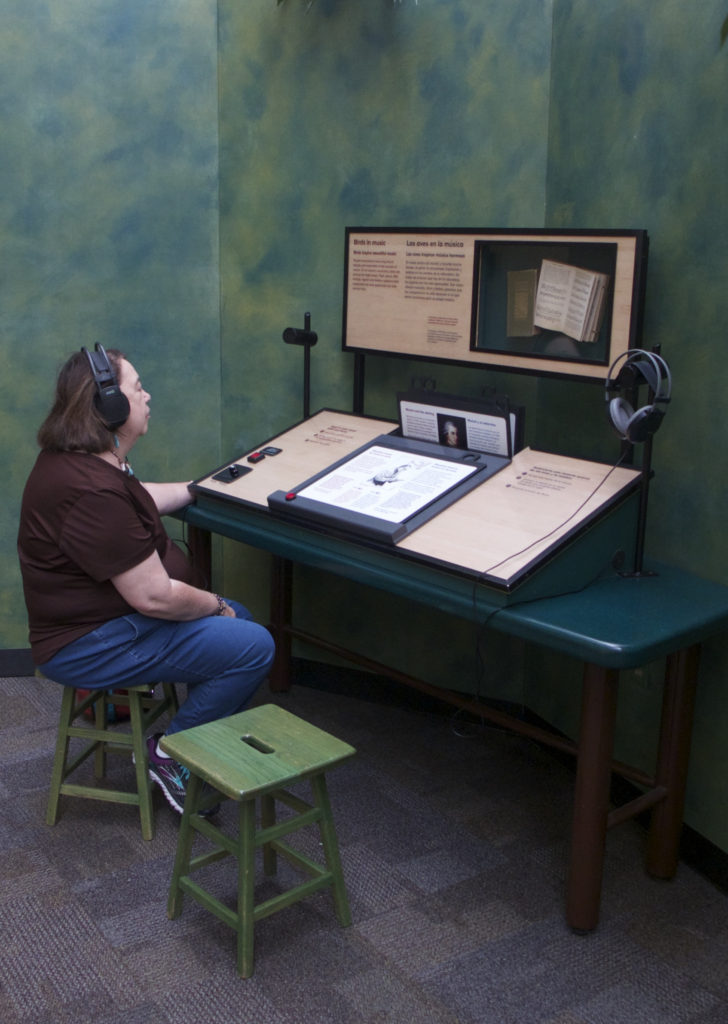
The booth Becky is pictured above in what I thought was the highlight of the exhibit. Here, we could sit down and select a piece of music that had been inspired by a sound from nature and then hear the sound that inspired it. To do this, you could pick a piece of music from the selection of album-cover sized cards you see sticking up in the center of the booth. You then placed the card in the center slot and hit play. There was both classical music and contemporary music to choose from, and most from well-known composers like Mozart and Sondheim.
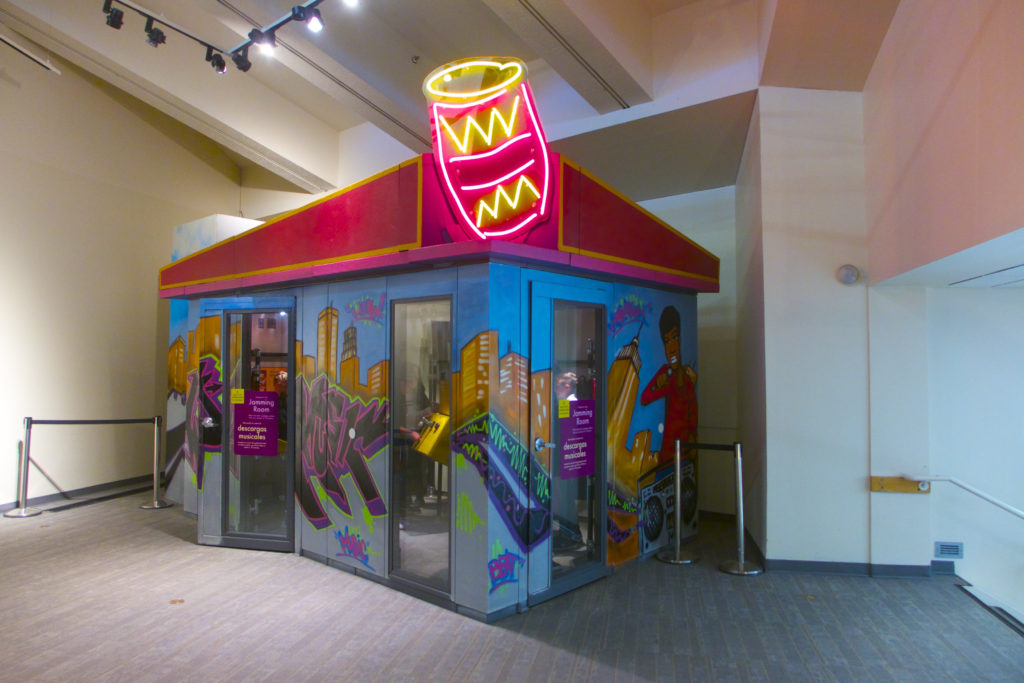
The “Jam Room” closed out the exhibit for us and was without a doubt popular with the large group of middle schoolers who were there on the day we visited. You could go in and record your voice and set it to different styles of music and manipulate its sound. Yeah, the middle schoolers came up with some wild effects for sure!
This exhibit introduced us to a different way of thinking about the music that is all around us on a daily basis from nature to the sound of taxi cab horns in the city to the rhythm of trains on a track, and much more. Even laborers digging a ditch, building a brick wall or weaving on a loom, have created “music” that has inspired.
We walked away wishing that more local museums and more schools would have exhibits like this one. They could inspire some young people to try making music and composing music for themselves. If you are in the Albuquerque area, or if this exhibit comes to your area, it is well worth a visit.
